Turtle in Restauro Magazine
The new issue of Restauro Magazine shows our Turtle in its full glory. As part of the topic "Art Handling", Restauro is dealing with the question of how we can better protect our cultural heritage in the future. Read the article on Hizkia van Kralingen, founder of Turtle, to discover more about Turtle and his business, vision and goals for the future. View the original article in German here or read the English translation below.
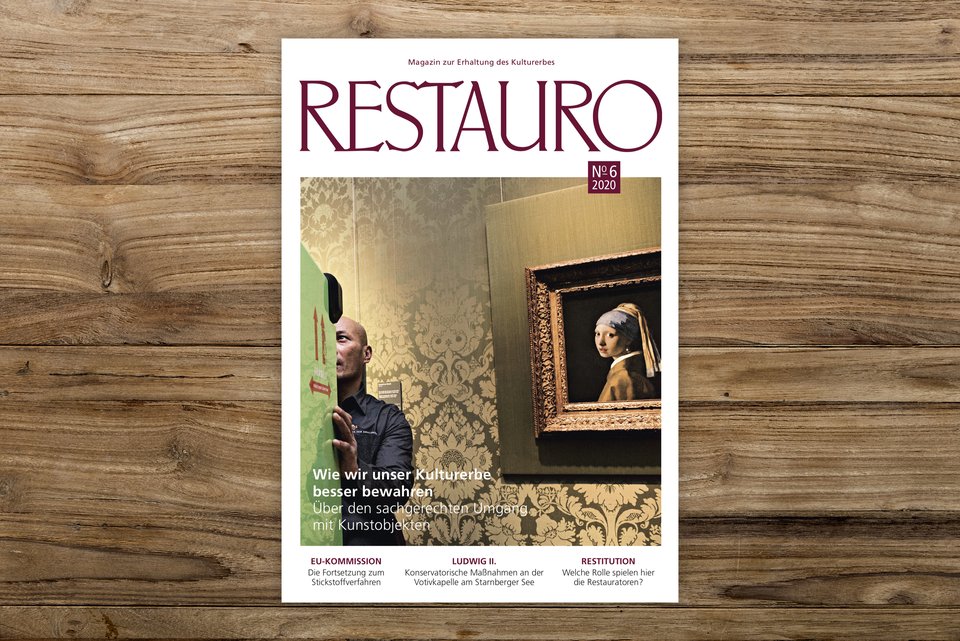
Rental crates are the future
The Dutch entrepreneur Hizkia van Kralingen is an important player in the international art transport business, the packaging professional who invented the reusable, climate-controlled crate made of polyester resin. RESTAURO spoke to him: is the coronavirus crisis affecting his business?
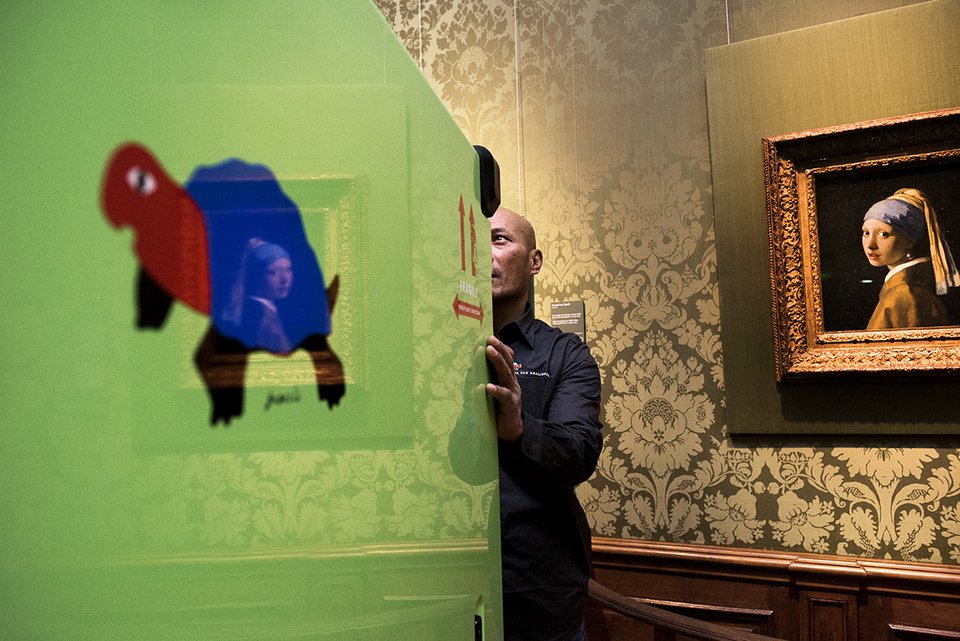
'When major national museums around the world started exhibiting the works of famous Dutch artists such as Vermeer, Rembrandt, Mondrian and Van Gogh, the need arose for reusable, climate-controlled crates. Hizkia van Kralingen came up with one. The photo was taken in the Mauritshuis museum in The Hague: in the background is one of the most famous paintings on display there, The Girl with the Pearl Earring by Johannes Vermeer.'
His grandfather founded the Van Kralingen removals firm in The Hague in 1926. In the 1960s, his father developed the business further, working with high-end clients such as embassies, galleries and museums at a time when museum logistics was in its infancy and museums were still hiring removals firms with almost no specialist knowledge for transporting the artworks. When it was Hizkia Van Kralingen’s turn to take over the company in 1990, he switched to an exclusive focus on the art world. At that time, large national museums around the world were starting to exhibit the works of famous Dutch artists such as Vermeer, Rembrandt, Mondrian and Van Gogh. That created a need for reusable, climate-controlled crates that would protect the artworks, rather than the somewhat unstable wooden containers that dominated art transport back then.
So Hizkia van Kralingen invented the Turtle. He got the idea from surfing friends who used polyester resin for their surfboards. He used the same resin in his design for a sturdy protective crate. That was the start of the world-famous Turtle brand. Now the second generation of crates has gone completely high-tech. The crates contain the same composite materials that NASA uses in its rockets. Touring exhibitions account for 80% of the business. To serve them, a centre has been set up that unites storage, logistics, conservation, collection care and a free-port zone under one roof. This was joined in December 2019 by a new depot in Willebroek in Belgium.
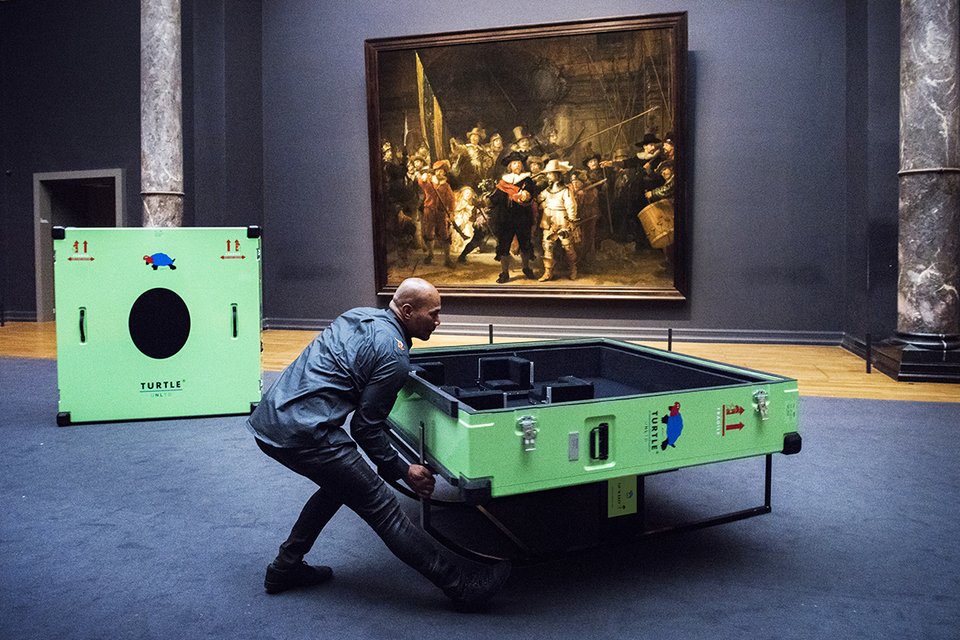
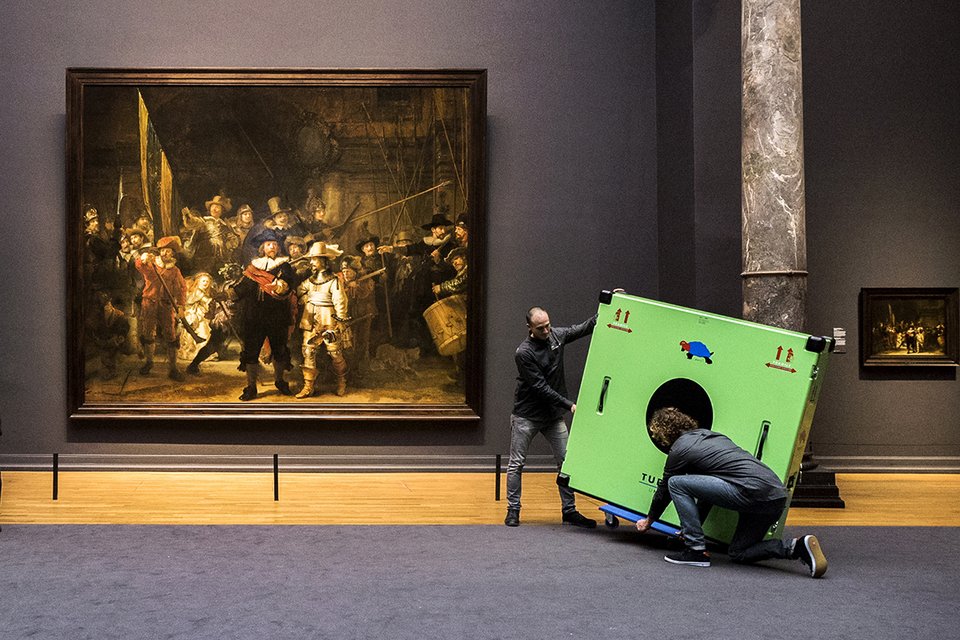
'Specialist knowledge is required for packing, unpacking, assembling and hanging artworks. That is why everyone who uses the Turtle box receives training from experts. This photo was taken in Amsterdam’s Rijksmuseum: at present, conservation and restoration work is being carried out on Rembrandt’s Night Watch (in the background) live in the museum in the largest research project to date on the world-famous painting.'
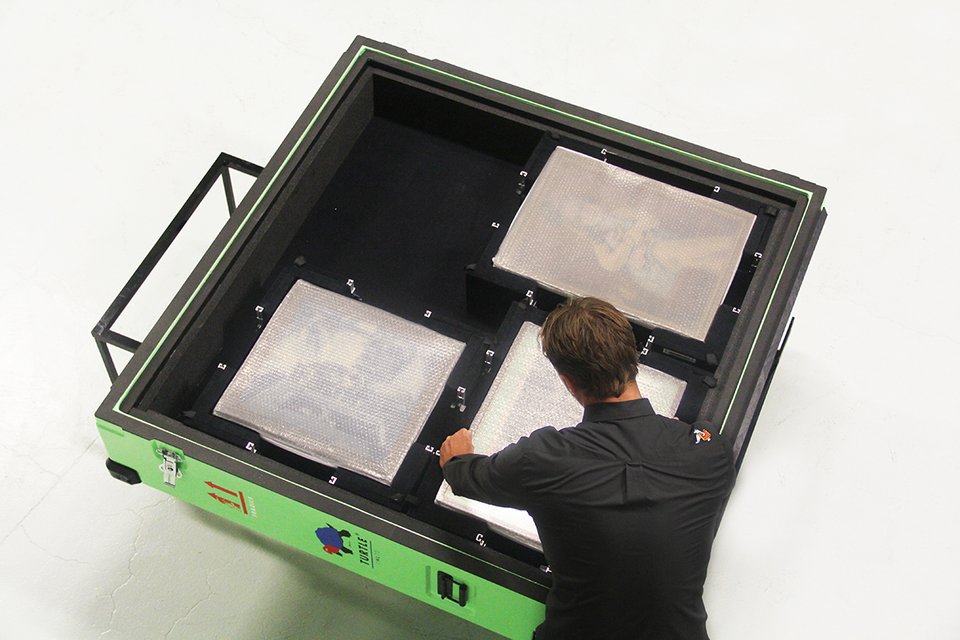
'Great care is taken in packing the artworks.'
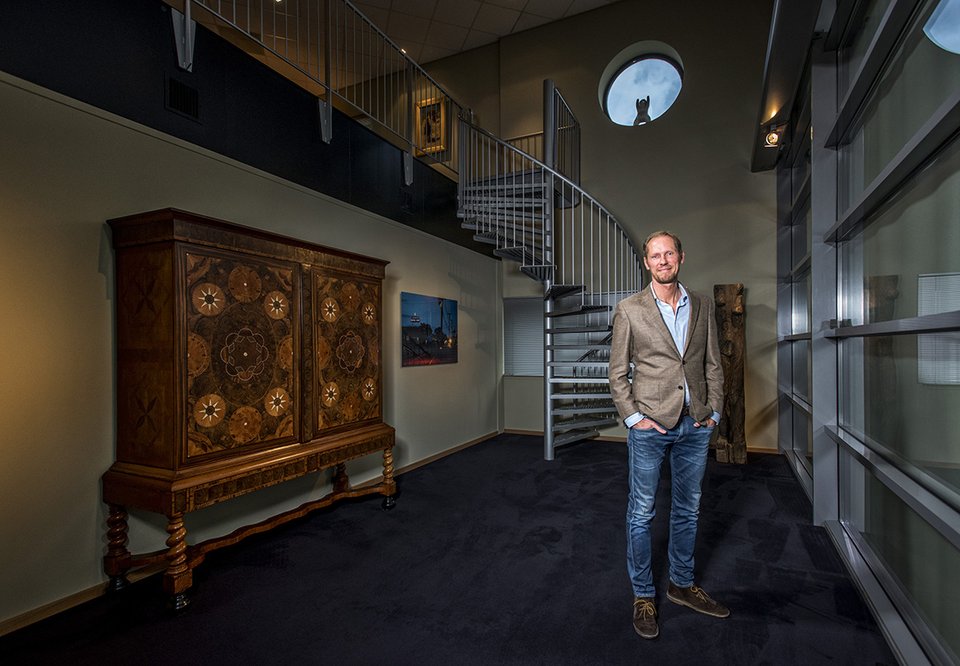
'The entrepreneur and packing professional Hizkia van Kralingen has run the family business since 1990.'
Restauro spoke to the entrepreneur and packing professional about how he is responding to the changing requirements in transport and logistics
Rental crates are the future. The Dutch entrepreneur Hizkia van Kralingen is an important player in the international art transport business, the packaging professional who invented the reusable, climate-controlled crate made of polyester resin. RESTAURO spoke to him: is the coronavirus crisis currently affecting his business?
How has the coronavirus crisis affected your business?
Hizkia van Kralingen: We had ambitious plans for 2020. As the market leader in the Netherlands, our focus is on the exhibition business. We are also working enthusiastically on innovations in the Turtle crate and on developing new products. Our driving force is the belief that art deserves only the very best. But suddenly we are living in a very different world. The coronavirus crisis has had a huge impact on all of us. Exhibitions were postponed and the budgets available for exhibitions were cut. Of course that has a knock-on effect on our business. Despite that, we are continuing to invest in sustainability and quality because that is where the future lies.
Have many museums cancelled jobs?
Unfortunately, a few museums did have to call off jobs but most have postponed their exhibitions until 2021 or 2022. As a result, many of our activities in the international transport of works on loan have been shifted to the coming years.
Thinking about the post-coronavirus period, what trends will we see in museum logistics?
Rental crates are the future. People want to rent the very best crates but only when they will actually be used. The key thing will be to deliver optimum quality despite the cost-cutting. What matters here are sustainability, efficiency and quality. Our Turtle crate meets those requirements in all respects. It guarantees secure transport for the most fragile paintings. Our aim is to be able to ship even the most sensitive artworks in reusable crates that have a useful lifespan of more than 25 years. Our Turtle crate already has a twenty-five year track record and has been scientifically proven to give the best performance. It’s likely that museums will be collaborating more closely in order to save costs. There’s an important role for us here as a logistical partner, boosting efficiency. We can combine national and international transport, reduce the burden for museums by deploying professionals and provide storage space on request.
You are the market leader in the Netherlands. Do you have plans to expand into Germany? How important is the German market?
Hizkia van Kralingen developed the Turtle crate in 1994. We set up a subsidiary for this as the idea was to make the Turtle products available for all art transport companies. The Turtle has been available for a number of years in the Benelux, Italy, Portugal, Scandinavia, the UK, the US, Australia and Singapore. We are very pleased to be opening a branch office in Germany in October 2020. Germany has ground-breaking museums with outstanding collections and we can offer them attractive solutions. We have already developed excellent business relations with various German museums; we’ve worked with them for a number of years with pleasure because of their high standards, the care they take and their expertise. Those are precisely the characteristics that are at the core of our products and services.
What is the next step in your innovation efforts?
We’re currently investigating the new generation of corner blocks in partnership with Professor Kerstin Kracht. We want to figure out the maximum values for the vibrations and shocks that an artwork experiences during transport. Our main aim is to optimize the shock and vibration technology. Furthermore, we have developed the Turtle Climate Cabinet for transporting 3D objects and artworks that need to lie flat. We are also working on new inventions such as the Turtle Reader, a data logger. The courier uses the Turtle app to log into the Turtle Reader, where they can read all the data and determine the ideal moment for unpacking the artwork. We are investing continually in quality and innovation. We take suggestions for improvements that museums make seriously, as we want to jointly find the best way to improve our service.
How do you explain your success in this industry?
Entrepreneurialism has been our driving force for the past thirty years. Listening properly, enthusiasm, perfectionism, boldness, curiosity, reliability and a love of art are the key to successful collaboration, and that’s what we bring together. We’re proud to help as many people as possible have access to this cultural heritage. It is an honour for us to make this contribution. Art invigorates the mind!
The interviewer for Restauro Magazine was Alexandra Wach.
More news

